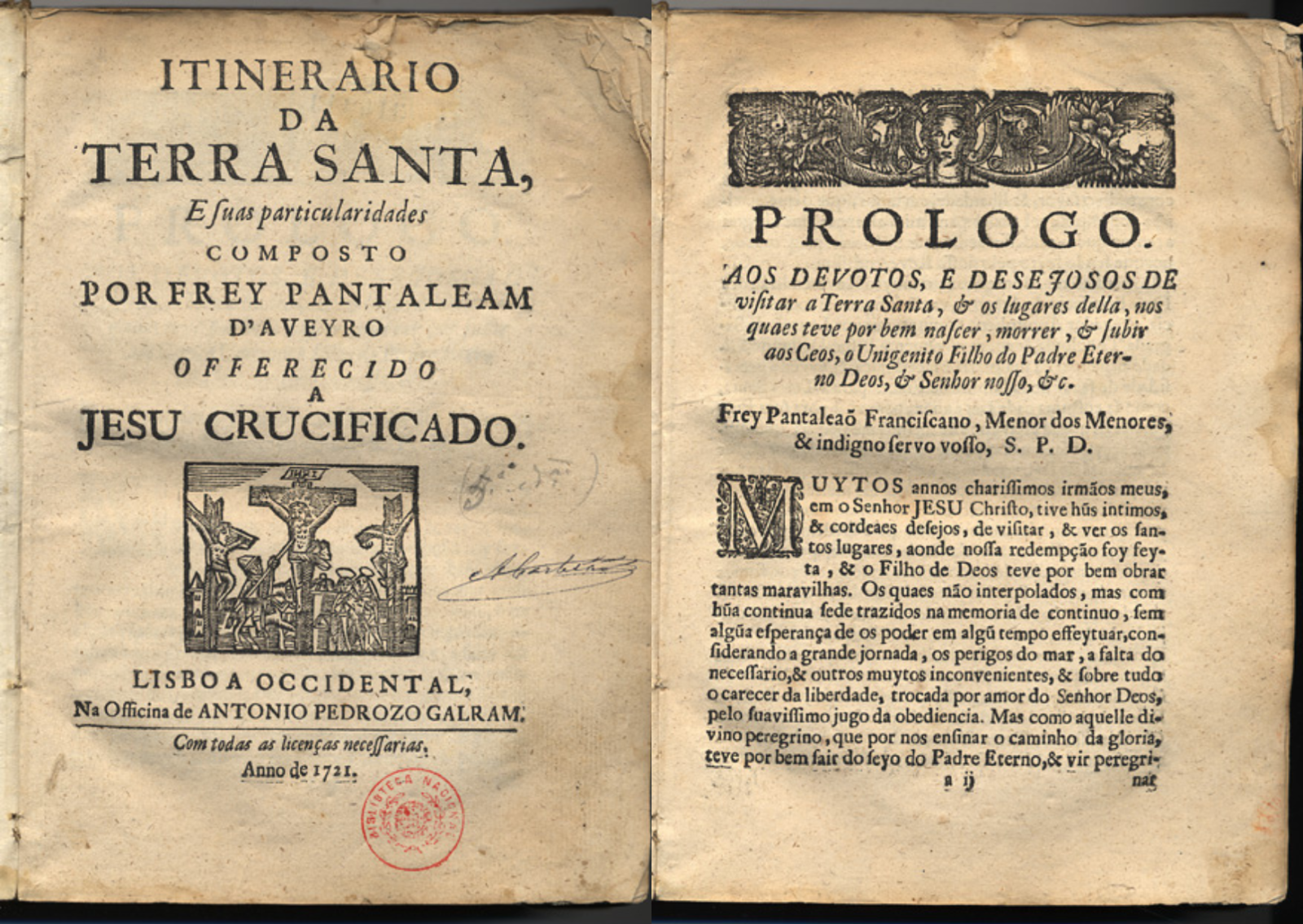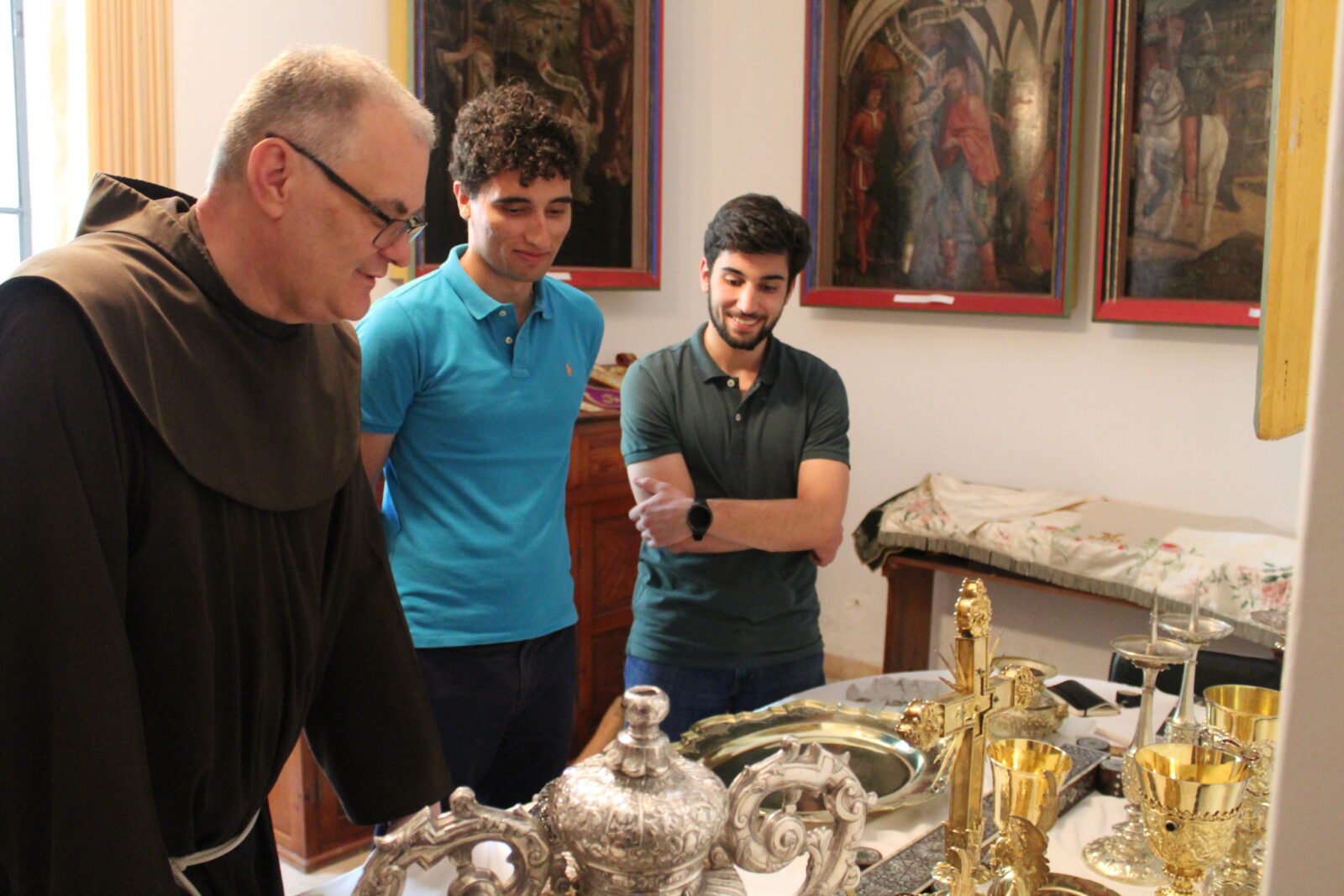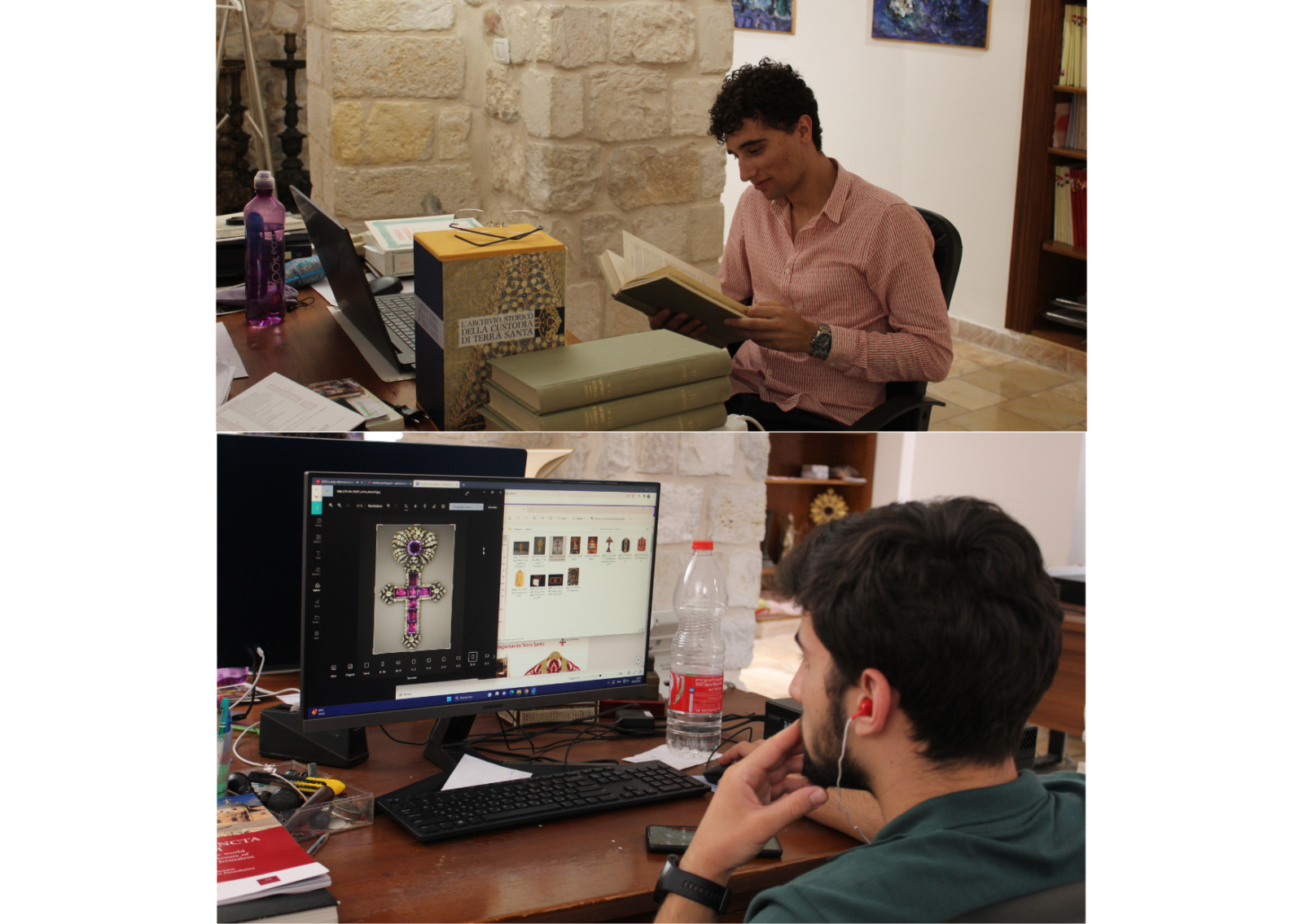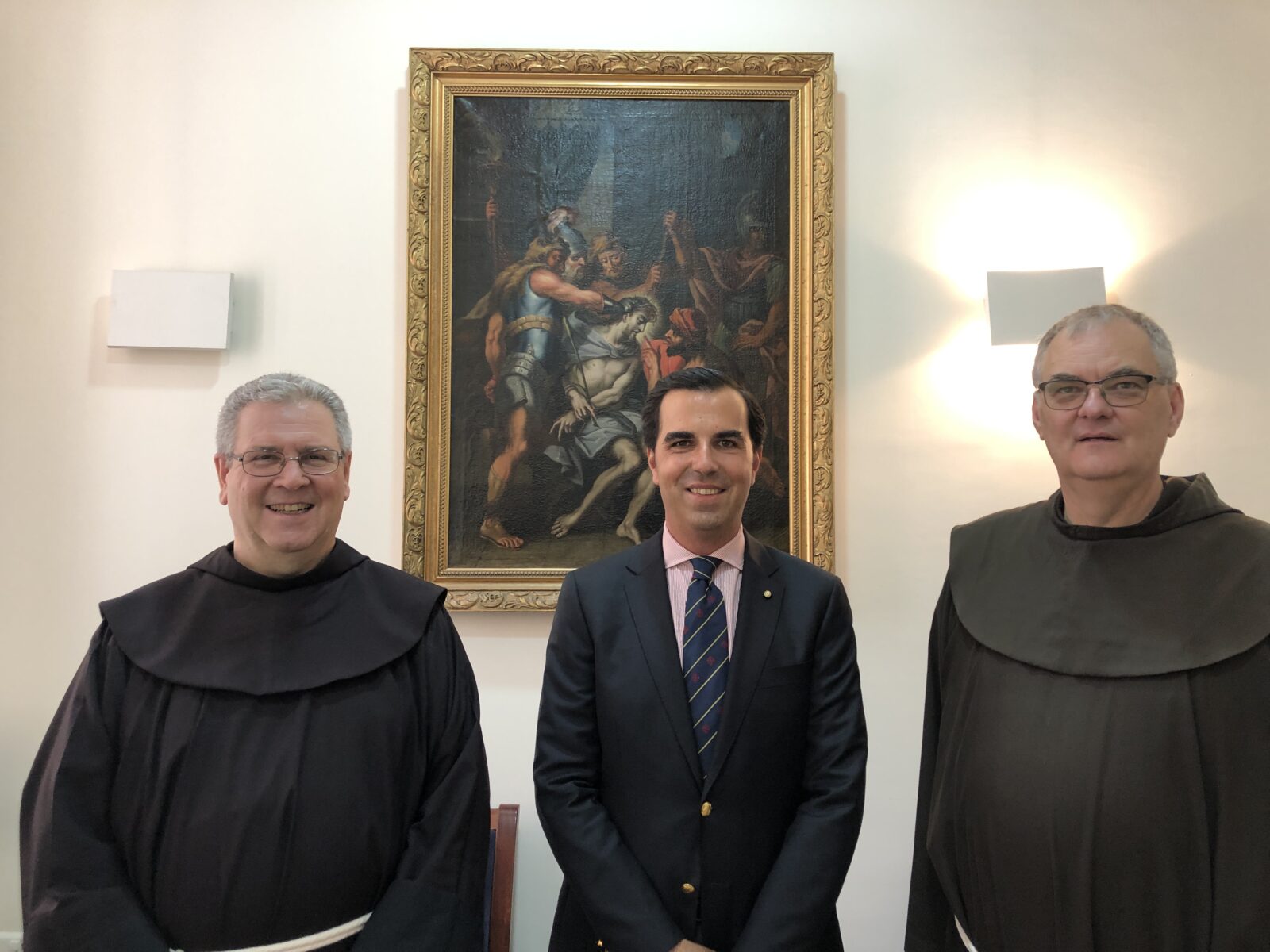From the past to the present, Portugal has always been at the service of the Custody of the Holy Land
The call of the Holy Land echoes in all the hearts of believers who want to walk in the footsteps of Christ. Travellers have always set off from one end of the Mediterranean for the other, with Portugal having maintained century-old links with the Friars Minor of the Holy Land through its kings, but also pilgrims and passionate volunteers…

“Itinerary of the Holy Land and its particularities” by Fra Pantaleão de Aveiro, friar minor of the province of Algarve.
The account by Friar Pantaleão de Aveiro
The registers of the “Condotte” kept in St Saviour’s Convent in Jerusalem trace the dates of arrival and origin of all the gifts received by the friars. While these registers are now well known, it is rarer to find these presents mentioned in the accounts of those who brought them. Recently, Marie-Armelle Beaulieu, managing director of Terre Sainte Magazine, was asked to write a historical article for the catalogue of the future Portuguese exhibition which will open in the Gulbenkian Museum at the beginning of November, and she found a very old account by a Franciscan from Portugal, a benefactor nation of the Custody of the Holy Land.
From the region of Porto, Fra Pantaleão de Aveiro has gone down in posterity for the account of his pilgrimage to the Holy Land in the company of 60 other friars in 1563. Escorting the gifts from European sovereigns which are today part of the collections of the Terra Sancta Museum, he stayed in Jerusalem for three years. The religious described in particular his participation in building St Saviour’s Convent, and gives us a unique account of life in the Holy City in the 16th century. The journalist found herself with a very painstaking task as she had to rewrite this “Itinerary of the Holy Land and its particularities” from old Portuguese.

The volunteers in front of some works of the “treasures of the Holy Sepulchre” with fra Stéphane Milovitch, Head of the Cultural Heritage of the Custody of the Holy Land. © TSM
Volunteers at the museum for the summer
Four hundred and fifty years later, a delegation of Portuguese volunteers followed Fra Pantaleão’s footsteps for a month of service in the Terra Sancta Museum. António Rodrigues, in his early twenties, is doing a master’s degree in history and heritage at the University of Porto. With Gabriel Marques, a student of classics at the University of Coimbra, they approached the Order of the Holy Sepulchre, their mission partner. For the three weeks they were at the museum, they worked in turn on the catalogue of the works, communication actions and the translation of the museum brochure to allow the Portuguese-speaking public to discover the project. The young people also came as pilgrims and António shared his emotion following his vigil in the Holy Sepulchre with us in these words: “The night of prayer in the basilica ended at dawn with the most moving moment: Mass in the Tomb. Stepping on this soil was for me a dream I had for a long time which came true during with stay with the Franciscans. Such an experience would not have been possible without the accompaniment of the Order of the Holy Sepulchre whom I thank.” Gabriel adds “Honestly, I’ll remember all that time with nostalgia. The Terra Sancta Museum is an international project and I was delighted to have the opportunity to make my contribution while discovering the Holy Land. I hope to be back soon !”

Top photo: Documentary research for António Rodrigues. Bottom: Updating the database for Gabriel Marques © TSM.
Making the Holy Land known in Portugal
The linchpin that allowed them to come is none other but the knight Tiago Teles de Abreu, delegate of the Terra Sancta Museum in Portugal. He is also the coordinator of the volunteer programmes organised by the Lieutenancy for Portugal of the Order of the Holy Sepulchre: “Our volunteer programmes are designed for young university students who wish to serve and make, at the same time, a spiritual journey in the Holy Land. These two dimensions, service and pilgrimage, are inseparable. This year, we sent volunteers to the Terra Sancta Museum for the first time, and we are very pleased with the outcome.” The museum is particularly important for him: “The Terra Sancta Museum will show much more than a set of rare and precious pieces. For me, each of these pieces expresses the love that Jerusalem generates in the nations of the whole world, including Portugal. I believe that visitors will perceive this love in each piece and, by contemplating its beauty, they will reach God“.

The Custos of the Holy Land, Fra Francesco Patton, with the Delegate for Portugal of the Terra Sancta Museum, Tiago Teles de Abreu, and the Director of the Department of the Cultural Heritage of the Custody of the Holy Land, Fra Stéphane Milovitch. © TSM
It is precisely to make this living heritage and this presence of Portugal in Jerusalem known that Tiago had the idea of inviting Fra Rodrigo Machado Soares to Lisbon last March for an evening of presentation of the project. The event was a success, with a public of journalists and other personalities from the world of art and the Church.

Fra Rodrigo Machado Soares, deputy director of the Department of the Cultural Heritage of the Custody at the Franciscan Cultural Centre of the Commissariat of the Holy Land of Portugal. © Agência ECCLESIA/PR.
“My mission is to engage the Portuguese people with the Museum and, through the Museum, promote the Holy Land as a destination that everyone should visit at least once in their lifetime”. Tiago is now concentrating on the exhibition “Treasures from Kings. Masterpieces from the Terra Sancta Museum”, which will be inaugurated at the Calouste Gulbenkian Museum in Lisbon on 10 November 2023. The works from the Terra Sancta Museum are coming to Portugal like an echo of the call of the Holy Land to Fra Pantaleão… There can be no doubt that these age-old links presented in a major international exhibition will arouse new vocations amongst young Portuguese, whether as volunteers or pilgrims to the Holy Land.
To find out more:
About Brother Pantaleão: http://ww3.aeje.pt/avcultur/AvCultur/Aveirilustres/FreiPantaleao.htm
Acknowledgements:
Marie-Armelle Beaulieu
Tiago Teles de Abreu, Gabriel Marques, António Rodrigues
(Translated from French by Joan Rundo)



